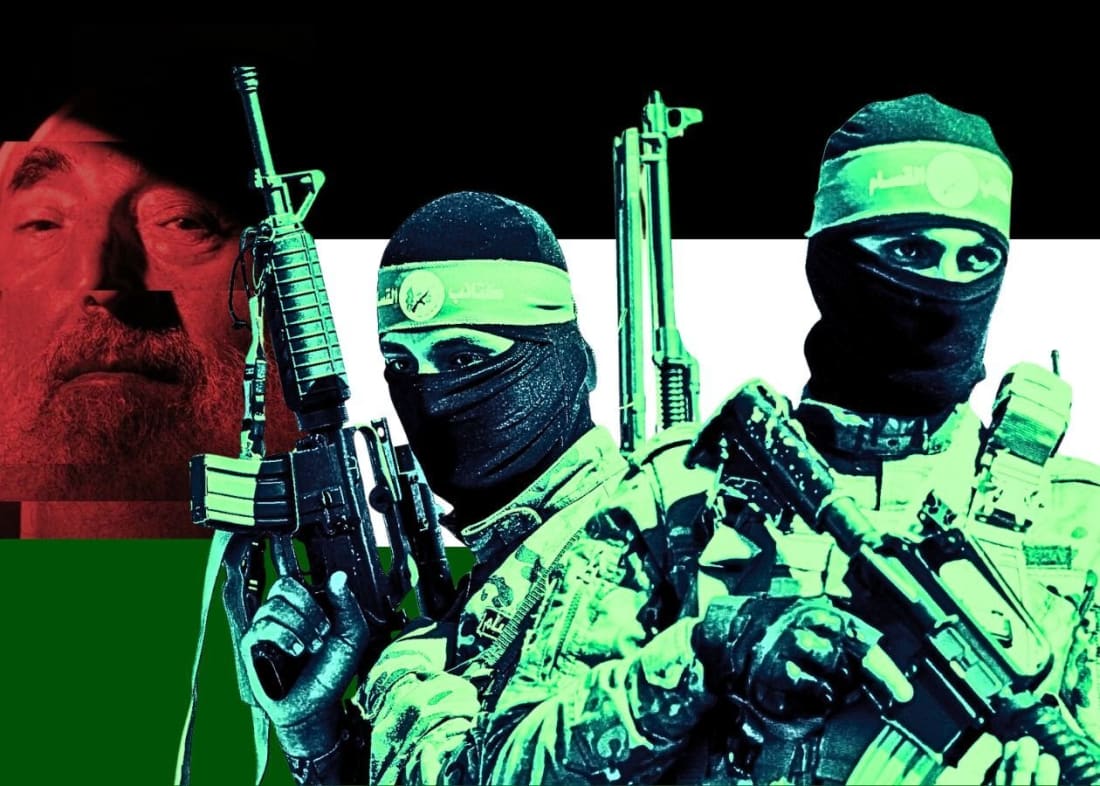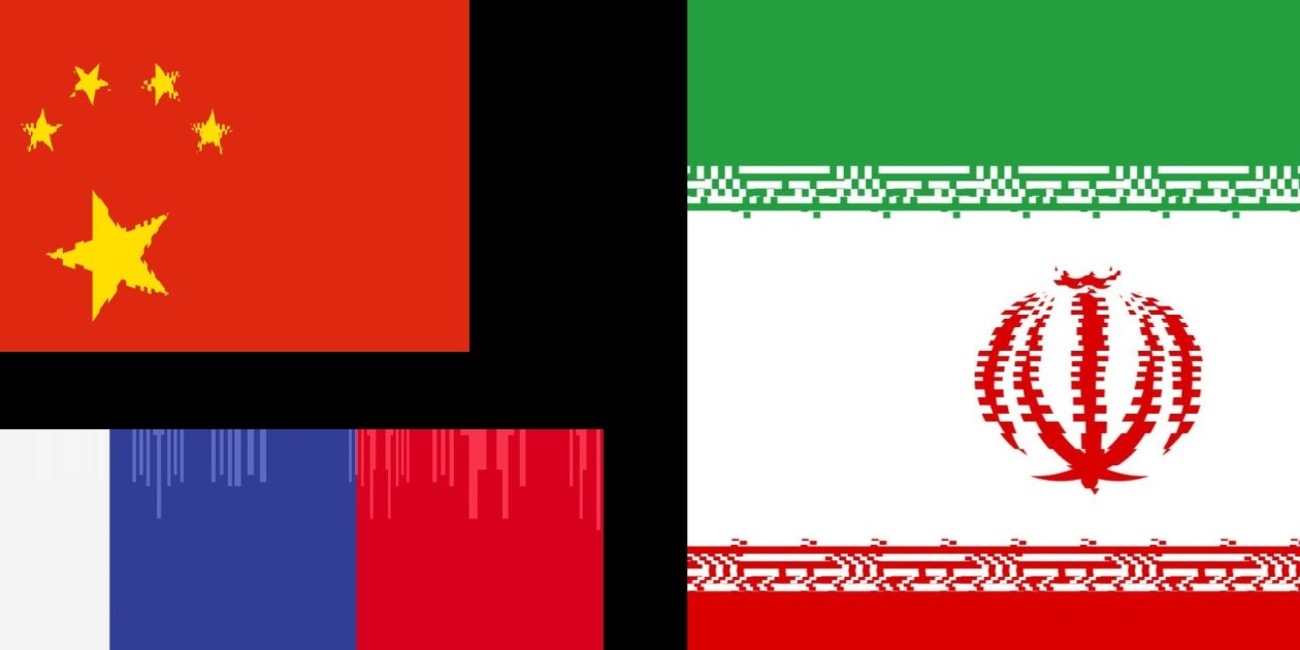|
I Met Hamas’s Founders. The Palestinian Terror Group Can’t Surrender in Gaza.
Hamas accepted Trump's Gaza ceasefire out of necessity, not conviction. Here's what the group's position means for the future of Palestine.
Editor’s note: We usually avoid sending more than one email per day. But with Vice President Vance in Israel trying to shore up the Gaza ceasefire, we thought you might appreciate this unique perspective from Ksenia Svetlova, a journalist and former member of the Israeli parliament who actually met Hamas’s founding leaders. Read on, and let us know what you think.
A more positive note from Garry Kasparov: I recently won a rematch against my fellow World Chess Champion Vishy Anand, and my friend and RDI Hero of Democracy Maria Corina Machado was awarded the Nobel Peace Prize. Call them small wins, but we don’t have enough good news these days. To celebrate, I’m giving away three chess sets, autographed by yours truly. Anyone signed up as a premium subscriber as of October 31, 2025 will be automatically entered to win.*
Remember, I don’t take one kopek from your paid subscriptions. All proceeds support the work of the Renew Democracy Initiative, including direct aid to Ukraine, amplifying the work for political dissidents, and getting more content up on The Next Move.
— Garry Kasparov, Chairman, Renew Democracy Initiative
Ksenia Svetlova is a former member of the Israeli parliament, the Knesset. She previously worked as a journalist and reported from Syria, Libya, Egypt, Gaza, and the West Bank. Ksenia is currently executive director of the Regional Organization for Peace, Economics, and Security.
Hamas accepted Donald Trump’s ceasefire for Gaza not out of conviction, but out of necessity.
Almost two weeks ago the Palestinian terrorist group acceded to the truce proposal, following Israeli approval and overwhelming support of the Arab and Muslim states. Beset by unprecedented isolation and mounting pressures from enemies and backers alike, Hamas ultimately succumbed to the terms imposed by the latest American diplomatic maneuver.
Why now, and what is the ultimate goal of Hamas for the future?
For years, I reported on Gaza and Hamas as a journalist, a correspondent on Arab affairs. During that time, I spoke with nearly all the key figures in Hamas’s leadership, including its founder and spiritual leader Sheikh Ahmed Yassin, as well as Ismail Haniyeh, Musa Abu-Marzouk, Mahmoud az-Zahar, and Ismail Abu-Shanab, among others.1
In these interviews Hamas leaders made clear to me that their intention was to fight Israel—and the Jews—until Judgment Day, allowing for only temporary hudna ceasefires when necessity dictated.
Signing anything resembling the Oslo Accords, which aspired to compromise and, implicitly, a two-state outcome, was anathema to Hamas’s core beliefs. The organization’s leaders spoke out and acted forcefully against the Israeli-Palestinian peace process in the 1990s and 2000s.
Based on those interviews and years of observation, I never believed a durable truce with Hamas was possible. It is also impossible for me to believe that Hamas has actually embraced Trump’s plan, especially the stipulation requiring the group to lay down its arms—even after two years of bloody and relentless war.
Nevertheless, Hamas signed on to the first phase in Trump’s plan: release of Israeli hostages, living and dead. Why did it have this sudden change of heart?
Alone in the world
Today, Hamas’s international isolation is unprecedented.
Its circle of friends is limited to Qatar, Turkey, and Iran. But friendships only count if they offer protection. Iran’s recent inability to shelter and protect Hamas leader Ismail Haniyeh—whom Israel assassinated in Tehran—undermined the group’s faith in the Ayatollah’s powerhouse. Most of its leadership now resides in Qatar, which has become a diplomatic hub—but not a fortress.
Turkey, meanwhile, offers Hamas primarily political sympathy and public support. Yet Ankara has little funds to spend on Gaza and no real military stake in Gaza’s future.
Both Turkey and Qatar reportedly started pushing Hamas to accept the deal when US President Donald Trump and his envoys, Jared Kushner and Steve Witkoff, got involved.
While the Qataris got a public apology from Netanyahu in the aftermath of Israel’s airstrikes on Doha, Turkey, reportedly, also got a tempting offer—to get another shot at acquiring the coveted F-35 stealth fighter jet (Turkey was banished from it following its purchase of Russian S-400 anti-aircraft systems).
More from The Next Move:
Trump brought unprecedented offers and force to the table, compelling both Israel and regional mediators to re-engage. When Hamas said “maybe,” Trump announced the deal was concluded to the whole world. Hamas, lacking clear alternatives and real friends, calculated that preservation—if only temporary—was worth the gamble.
Also, there’s no doubt that Israel too had to compromise: while Prime Minister Benjamin Netanyahu previously insisted on “finishing Hamas off” prior to any withdrawal from the Gaza Strip, the current deal postpones Hamas’s disarmament to the as-yet-unimplemented second stage and it’s unclear when it will happen. Meanwhile, the IDF had to withdraw to the so-called “yellow line.” Israel was required to allow a massive flow of humanitarian aid (and Israel’s failed Gaza Humanitarian Foundation was dismantled).
The power dilemma: Surrender is not an option
Since the very beginning of the ceasefire Hamas behaves exactly as before: it plays for time, claiming that it has difficulties retrieving the bodies of the dead hostages, it shoots its political opponents and intimidates others, it steals and then resells humanitarian aid, and, of course, it tries to regroup and regain some of its lost strength.
Earlier last week terrorists attacked and killed two IDF soldiers: this violation of agreement resulted in IDF’s retaliation, leaving a few dozen Gazans dead–among them Hamas operatives as well as civilians.
Hamas still calls its weapons “the weapons of resistance,” and demands a collective Palestinian decision on its future, although it didn’t consult with fellow Palestinians prior to waging the horrendous October 7 attack against Israel and starting an unwinnable war. Also, as was reported by Israeli Channel 11, it is already trying to negotiate its inclusion in Gaza’s proposed post-war technocrat government.
The need for enforcement
Even more concerning is ambiguity shrouding the later stages of Trump’s plan. Who governs post-ceasefire Gaza? Who ensures demilitarization?
There is no clear roadmap detailing who will hold accountable the territory, nor what mechanisms exist to guarantee Hamas not only to lay down its arms now, but also to ensure that it will not happen tomorrow. Recent history suggests declarations mean little without on-the-ground enforcement.
The world may be tempted to herald a new dawn, hoping Trump’s plan signals a genuine turning point for Gaza, Israel, and the Middle East. However, Hamas is still very much alive. Its powerful enablers in Qatar and Turkey didn’t change their minds and will act in a way that will secure Hamas’s survival. History and experience demand caution.
Unless a comprehensive, enforceable system for disarmament and governance is enacted, with a clear political horizon for the Palestinians, hope risks turning into hubris, and a fragile ceasefire into another round of hostilities.
1. Israeli journalists have covered Gaza extensively up until the end of 2006, when IDF Southern Command forbade it, due to rising risks and concerns around kidnapping. Until that point, Hamas leaders gave interviews to Israeli journalists for both Israeli and foreign publications.
On the fence about becoming a paid subscriber? We have a special offer to make the decision easier for you: $49 for an annual subscription—a 30% discount—now through November 8. Paid subscribers get exclusive benefits like access to interactive Zoom calls with Garry Kasparov. Anyone who signs up as a premium subscriber by October 31 will be automatically entered to win a chess set signed by Garry Kasparov.1
More from The Next Move:
More from The Next Move:
*Please see full rules and regulations for The Next Move 2025 raffle.



